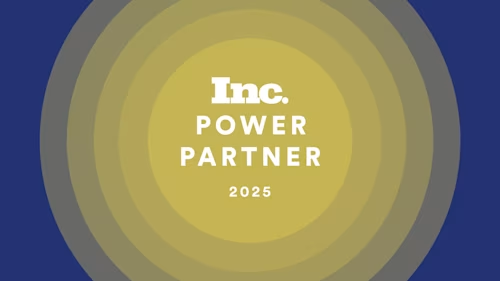
8 Best Practices for Implementing Contract Management Systems
We share best practices gleaned from Docusign’s implementation experts’ success in deploying contract lifecycle management (CLM) across hundreds of customers

Automating your contracts has the power to make your processes more efficient, save time and money, and reduce risk. But even thinking about the transition can be daunting, especially when contract workflows are mission critical. The good news is that there are simple steps you can do to make moving to an automated contract management system worry-free. In fact, you’ll find that with an automated contract management system, along with efficiency, you’ll strengthen relationships with customers, vendors and more. Rather than spending time pushing paper, you’ll create a frictionless process for approving contracts so that everyone can get onto business.
The ability of your new contract management system to achieve your goals relies on proper implementation. Organizations that take advantage of best practices for enterprise contract management roll-outs have a headstart on accelerating revenue, driving down costs and mitigating risks.
The overarching lesson on contract management system implementation is quite simple: Planning and preparation boosts your ability to streamline all existing workflows and increase your speed-to-revenue in a matter of weeks.
Here, then, are 8 best practices, gleaned from Docusign’s implementation experts’ success in deploying contract lifecycle management (CLM) across hundreds of customers.
Begin at the executive level. It’s essential that all executives buy into the adoption of a new contract management system. Without high-level support, adoption will be an uphill battle. What does stakeholder buy-in look like? It’s clear communication and alignment across your executive team, and cascades down through your organization. It includes providing budget to support the funding of key projects and dedicated resources—and allocating time for proper training.
Establish governance. Once you establish buy-in, it’s important to decide who will run the CLM program. By choosing a well-qualified project manager and QA team, you can bridge the knowledge gap between your organization—and your contract management system vendor. Success often hinges on selecting the right governance committee that includes business partners from different areas of the organization. This makes it possible to implement your project with strong alignment on the rules, practices, and processes across the enterprise.
Empower enablement and training teams. The lynchpin to driving adoption and successful outcomes, the enablement and training teams produce training documents, facilitate communications and create a feedback loop. Effective training helps users get up and running quickly. Enablement teaches them to do things right, especially in the specific context of their role. For organizations with multiple divisions or geographies, the enablement team may need to be anchored at a higher-level (e.g., a change management) team to bring focus on how widespread adoption affects not just processes, but people, too.
For standard end-user functions, off-the-shelf training modules may be sufficient. However, for those in specialized roles, custom content may be the best approach.
Identify current processes—and visualize the future state. Think you’re ready to dive in? Not yet. True value from your CLM comes from closing the gap between your current and future state. This begins with thoroughly documenting the current state, and gaining a detailed understanding of what is currently being done—especially aspects that are critical to managing relationships. This documentation and assessment helps identify process inefficiencies, gaps and other opportunities for improvement. With this insight into how you are doing things now, you can envision what your more efficient and effective future-state CLM solution should look like.
Define project success. While an essential best practice, defining project success is also the one area that is often overlooked by organizations during implementation. Unless you define your measures for success at the very start, it’s hard to demonstrate ROI, particularly when you look to expand CLM into other areas of the organization.
What KPIs and success measures for your contract management system will you track? Overall project success can be measured by implementation budget and timeline. Program measures can be tied to process KPIs like speed, as reflected by contract turnaround time or iterations, as measured by revisions to the agreement. At the corporate level, success will be measured by business outcomes such as how improved contract processes increase revenue and reduce risk. These objective performance metrics enable all stakeholders to evaluate progress, acknowledge when benchmarks are achieved and know where more work needs to be done.
Start small. Even simple changes to enterprise contract management initiatives can yield quick ROI. So rather than tackle the entire implementation all at once, break it into bite-sized chunks or multiple phases. The added benefit of starting small—thereby introducing MVP, or minimal viable product—is that it gives you the opportunity to learn as you go and leverage key insights. To gain value from the outset, begin with prioritizing high-impact/lower risk use cases. For instance, some processes, such as creating or uploading an agreement, tagging it with data (like Total Contract Value) and storing it in an organized directory are basic to all departments. Once a process starts meeting its KPIs, you can standardize it and apply it broadly across all use cases—with a few simple tweaks.
Prioritize and migrate contracts. The migration of active legacy contracts, and all documents required by compliance, should take precedence over inactive contracts. First, identity where these documents live—and what form they take. Even in this age of automation, companies are often shocked to see the volume of paper contracts still stored in filing cabinets. Once you’ve prioritized categories of documentation, collaborate with your contract management vendor to create a detailed plan for migrating these onto the new CLM platform.
Test robustly. Here is where your subject matter experts add essential value. They know what they want from core configuration components, and what should be part of standardized workflows and standard operating procedures. By having the most knowledgeable people within your organization actively involved in the contract management testing process, you will ensure that your CLM solution is properly configured, save time on roll-out, and mitigate project risks.
Ready to roll-out a contract management system across your enterprise? Learn more about Docusign CLM.
Austin Miller is a director of product marketing at Docusign.
Related posts
Docusign IAM is the agreement platform your business needs




